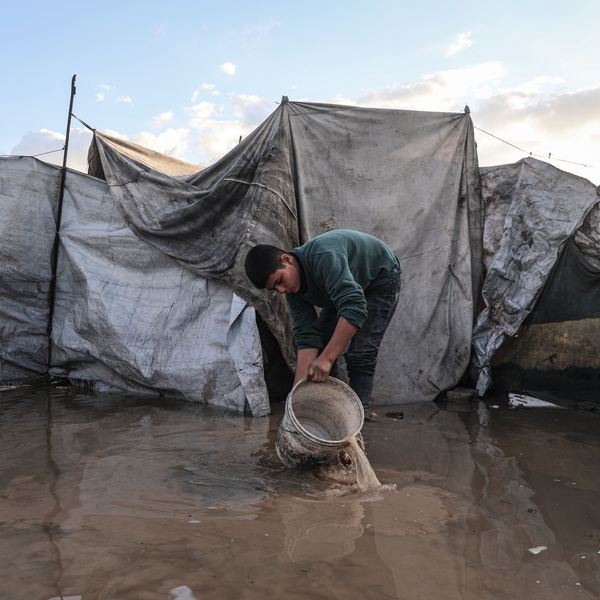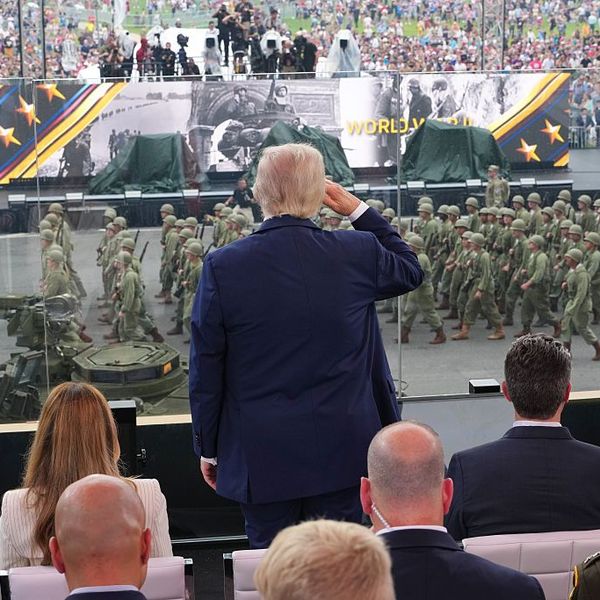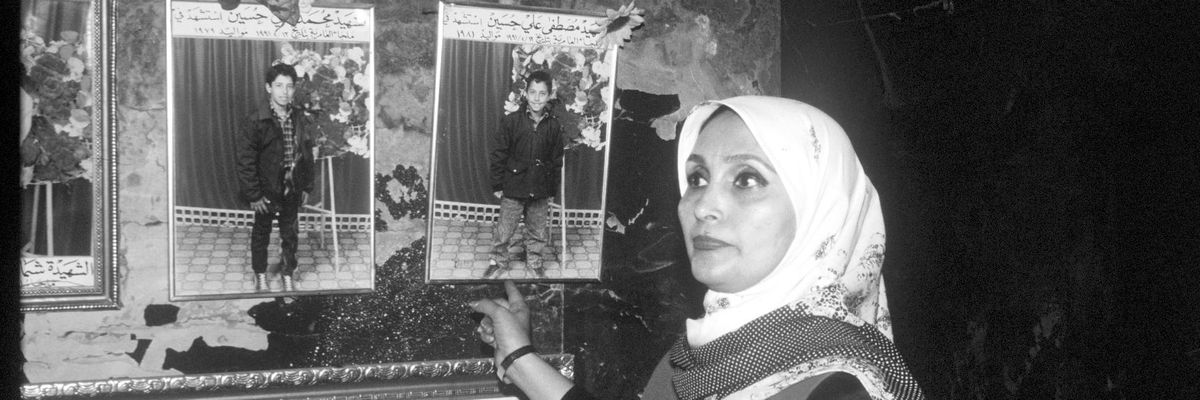The traces of the attack were visible everywhere. There was a large hole in the solid concrete roof. The rebars had been torn apart. On the walls there were pictures in long lines. Pictures of children, who should have had their lives ahead of them. Pictures of burnt bodies. Their lives ended abruptly in the very place where they thought they would be safe.
Intesar Ahmed showed me around in the shelter in al-Amiriya on the western outskirts of Baghdad. She told me what happened at four o'clock in the morning on February 13, 1991.
"Every night during the war, people sought refuge here. They were civilians, innocent people. US bombs killed our neighbors and friends. 52 of the dead were children under the age of five, twelve were infants. This was where their life ended..."
When I visited al-Amiriya, more eleven years had passed since that dramatic night. But during the visit in October 2012, it felt so close.
Hundreds of people had huddled in the shelter. Some of them were probably asleep when the first missile blew up the hole in the roof. Four minutes later, the next missile penetrated into the shelter. What did they think during those minutes?
I try to imagine the fear, the panic, the anxiety of death. But I think it is impossible to understand. 408 people lost their lives that night.
When the attack on the shelter was carried out, the Gulf War had been going on for almost a month. The coalition led by U.S. had begun its airstrikes against Iraq on January 17, 1991. The official aim was said to be to save Kuwait and enforce the Iraqi army to leave Iraq's small neighbour to the south.
A quarter of a million Iraqis lost their lives during the six weeks of the war. That can be compared to the fact that 148 Americans were killed.
In the tv news, the Gulf War was portrayed as some kind of video game. The viewers got to see video clips with cool light effects when the missiles hit their targets. "Smart bombs" became a concept.
The reality on the ground was different.
Ramsey Clark, former U.S. Secretary of Justice, traveled to Iraq shortly after the war. What he saw -- the result of 42 days of bombings - shocked him. He drew the conclusion that this was not a war. It was rather "a planned, systematic genocide of a defenseless population, almost without setting a foot on Iraqi soil".
A quarter of a million Iraqis lost their lives during the six weeks of the war. That can be compared to the fact that 148 Americans were killed.
Something that also brings you to mind genocide was the systematic destruction of infrastructure. Denis Halliday, U.N. Vice Secretary-General 1997-1998, told the world that the coalition attacked water treatment plants, sewage systems, schools, railways and oil refineries.
One who experienced the horrors himself was Murtada Hassan, chief physician at the al-Mansour Children's Hospital in the Iraqi capital. I met him in October 2002.
"During the Gulf War, the United States shut down the electricity supply. Without electricity, neither the water supply nor the air conditioning will work. A hospital gets hot and dirty," he said during the tour of hos work place.
"We had to perform surgeries with only candle light. Vaccine and blood were destroyed in the heat. They bombed hospitals, health clinics and shelters."
In October 2002, the memories from 1991 had been brought to life again. The Iraqis were well aware that they would soon be hit by a new hellish war led by George W Bush and Tony Blair. The Iraqis feared that it would be even worse than the Gulf War.
The anxiety and abandonment was also felt during the visit in al-Amariya.
"Why is the United States planning to start a new war? I can assure you that we are not terrorists. I think it's about the United States wanting our oil. The entire Iraqi people are victims," Intesar Ahmed said.
At the end of the tour, I remember her raising her eyes, pointing to the pictures of two smiling children who were killed during the attack:
"This is exactly what will happen if the US attacks us again..."
She was right. The Gulf War 30 years ago was only the beginning of a long period of death, suffering and looting in Iraq. A period which has not yet ended.
This article (in Swedish) was first published in Swedish weekly Proletaren (proletaren.se).



